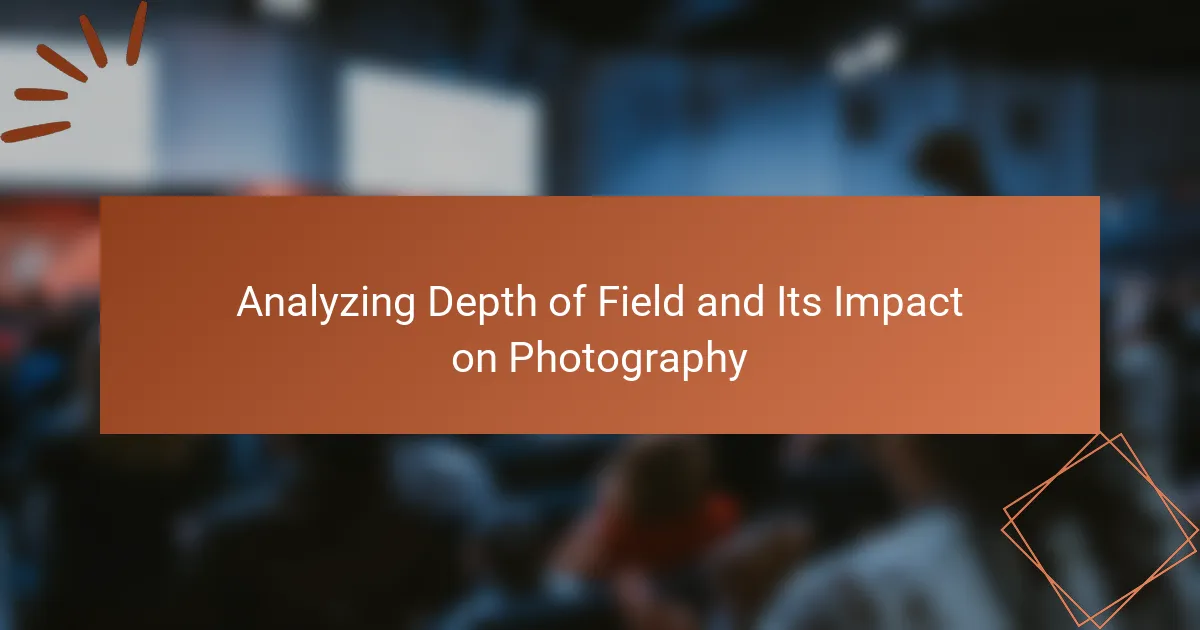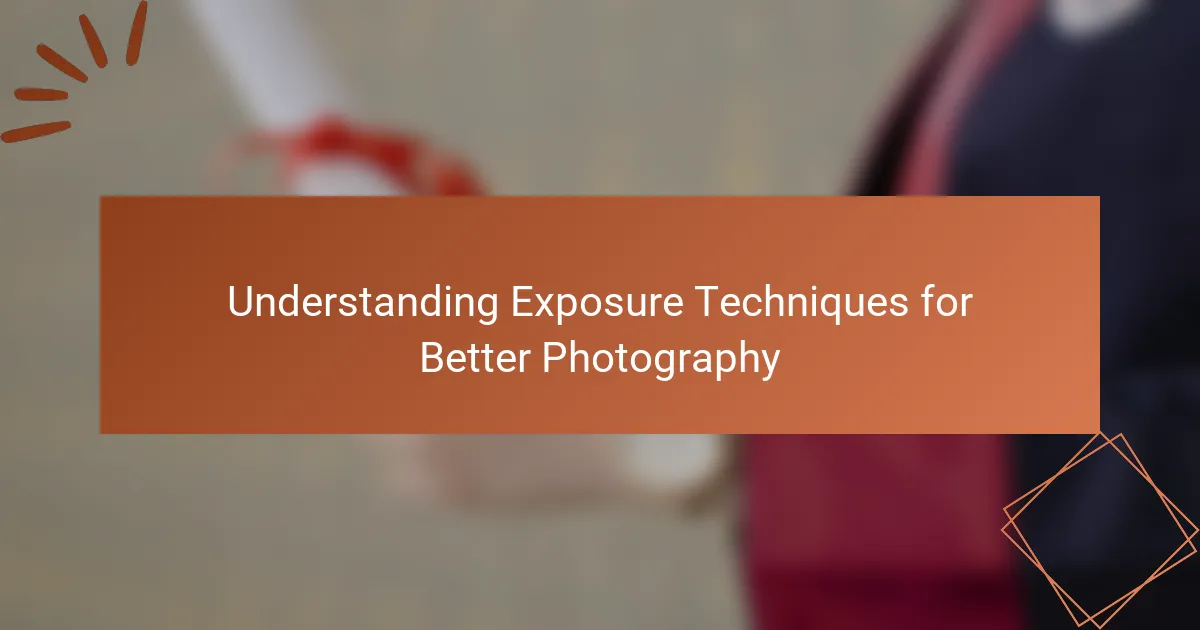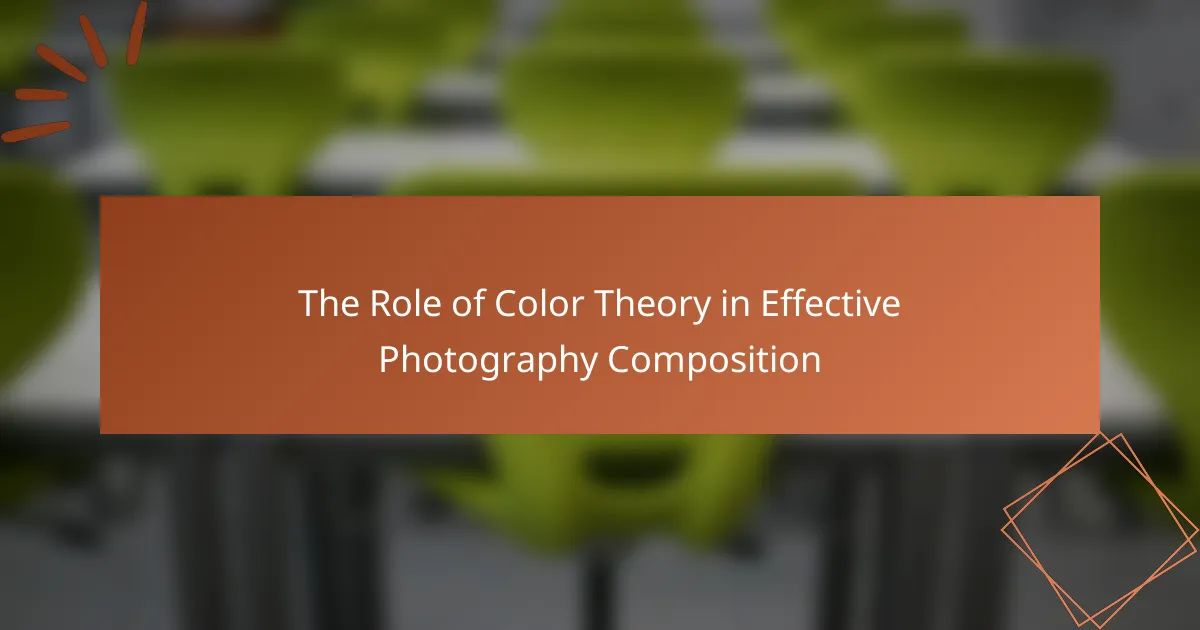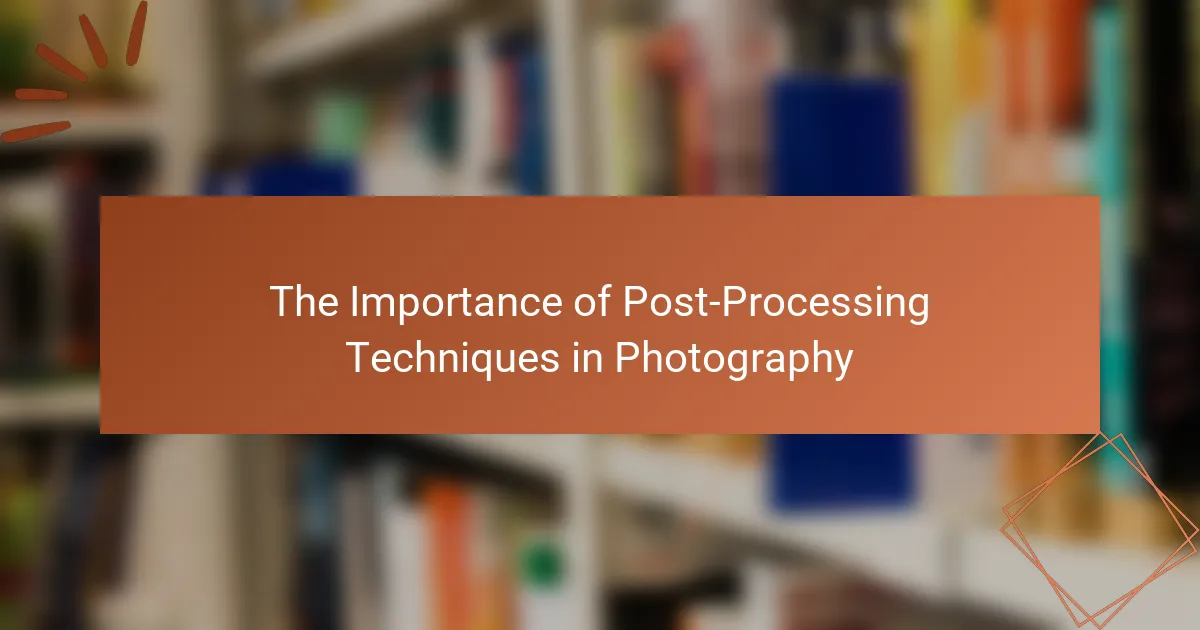Perspective is a crucial element in photography that significantly influences composition and emotional impact. It affects how viewers perceive the relationship between subjects and their surroundings, with various angles and distances creating depth or flattening an image. Techniques such as changing angles, adjusting focal lengths, and utilizing depth of field can alter perspective, enhancing visual storytelling. This article outlines these techniques and their effects on viewer engagement, emphasizing the importance of perspective in creating dynamic and impactful photographs. Through practical applications, photographers can enhance their compositions and emotional resonance by experimenting with different viewpoints and methods.
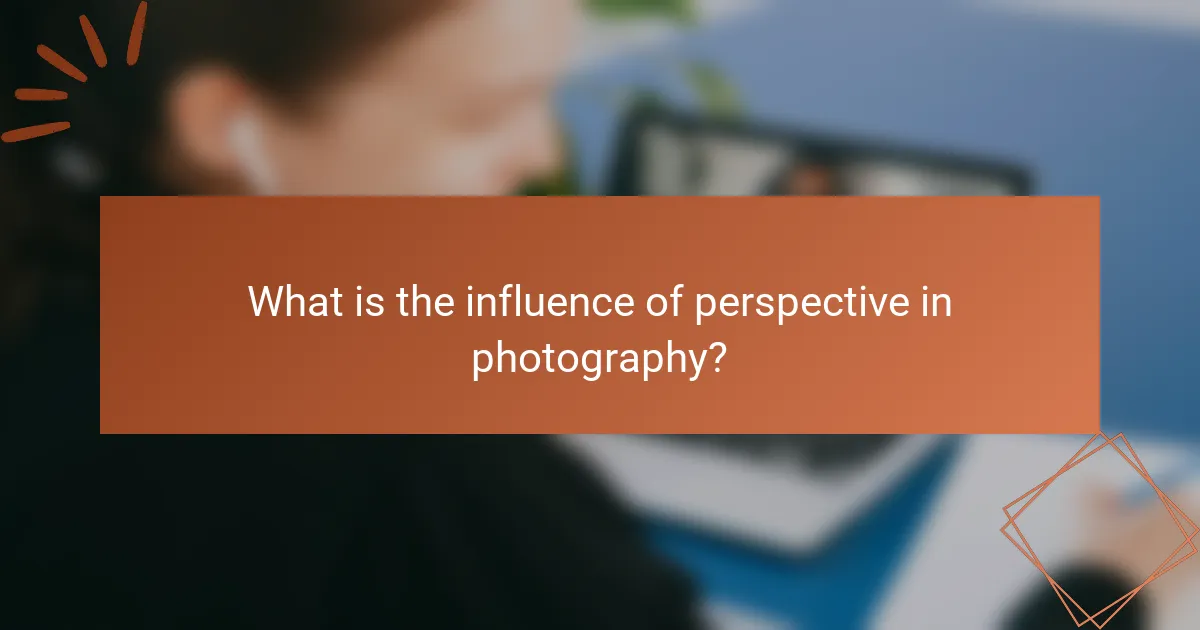
What is the influence of perspective in photography?
Perspective in photography significantly affects the composition and emotional impact of an image. It determines how viewers perceive the relationship between subjects and their surroundings. Different angles and distances can create depth or flatten an image. For example, a low angle can make a subject appear more imposing. Conversely, a high angle can diminish the subject’s presence. Wide-angle lenses can exaggerate perspective, enhancing the sense of space. In contrast, telephoto lenses compress distance, making subjects appear closer together. This manipulation of perspective influences storytelling and viewer engagement. Studies show that perspective shapes emotional responses, making it a crucial element in visual storytelling.
How does perspective shape the viewer’s experience in photography?
Perspective significantly shapes the viewer’s experience in photography by influencing how subjects are perceived. Different angles and viewpoints can alter the emotional impact of an image. For example, a low angle can make a subject appear more powerful, while a high angle can create a sense of vulnerability. The choice of perspective also affects composition and depth, guiding the viewer’s eye through the photograph.
Research indicates that perspective can evoke specific feelings and interpretations. A study published in the Journal of Visual Culture found that viewers responded differently to images based on the perspective used. This demonstrates that perspective is not just a technical choice but a crucial element in storytelling within photography.
What are the different types of perspective used in photography?
There are several types of perspective used in photography. These include linear perspective, atmospheric perspective, and bird’s-eye view. Linear perspective involves converging lines that create depth. This technique is often seen in roads or railway tracks. Atmospheric perspective refers to the effect of distance on color and clarity. Objects further away appear lighter and less detailed. Bird’s-eye view is captured from an elevated position, providing a unique vantage point. Each perspective type influences the composition and emotional impact of the photograph.
How does perspective affect composition in photography?
Perspective significantly affects composition in photography by altering how subjects are perceived. It determines the angle and distance from which a subject is viewed. Different perspectives can create varying emotional responses. For example, a low angle can make a subject appear more powerful. Conversely, a high angle can create a sense of vulnerability.
The choice of perspective impacts the framing of elements within the image. It can emphasize certain features while minimizing others. This manipulation of visual space guides the viewer’s focus. Additionally, perspective influences depth and dimension in a photograph. By using techniques like leading lines and foreground interest, photographers can enhance the sense of three-dimensionality.
Research by the American Psychological Association highlights that perspective shapes viewer interpretation. Altering perspective can change the narrative conveyed by an image. Therefore, understanding perspective is crucial for effective photographic composition.
Why is perspective important in storytelling through photography?
Perspective is crucial in storytelling through photography as it shapes the viewer’s interpretation of the image. It influences how subjects are perceived and can evoke specific emotions. Different angles and distances can highlight details or create a sense of scale. For instance, a low angle can make a subject appear powerful, while a high angle can convey vulnerability. Research shows that perspective affects emotional responses; images taken from unique viewpoints often engage viewers more deeply. This engagement enhances the narrative quality of the photograph, allowing for a richer storytelling experience.
How does perspective convey emotions in a photograph?
Perspective in a photograph significantly influences the emotions conveyed. It alters how the subject is perceived by the viewer. A low-angle perspective can create a sense of power or dominance. Conversely, a high-angle perspective may evoke feelings of vulnerability or insignificance.
The distance from the subject also affects emotional impact. Close-up shots can intensify feelings of intimacy or urgency. Distant shots might evoke loneliness or isolation. The choice of perspective shapes the narrative within the photograph.
For instance, a wide-angle lens can exaggerate the scale of a scene, enhancing feelings of awe. A shallow depth of field can isolate the subject, highlighting their emotional state. Research shows that perspective can manipulate viewer interpretation. Studies indicate that specific angles trigger distinct emotional responses.
Thus, perspective is a crucial tool in photography for conveying emotions effectively.
What role does perspective play in highlighting subjects in photography?
Perspective plays a crucial role in highlighting subjects in photography. It determines how a viewer perceives the subject’s size, depth, and relationship to its surroundings. Different angles can create varying emotional responses. For example, a low angle can make a subject appear more powerful or dominant. Conversely, a high angle can convey vulnerability or insignificance.
Additionally, perspective affects the composition of the photograph. It influences the framing and balance of elements within the shot. Using leading lines or foreground elements can draw attention to the subject. This technique enhances the visual narrative of the image.
Research shows that perspective can significantly alter the viewer’s interpretation of a photograph. A study by the American Psychological Association found that perspective changes can impact emotional engagement with visual content. Thus, photographers can use perspective intentionally to emphasize their subjects effectively.
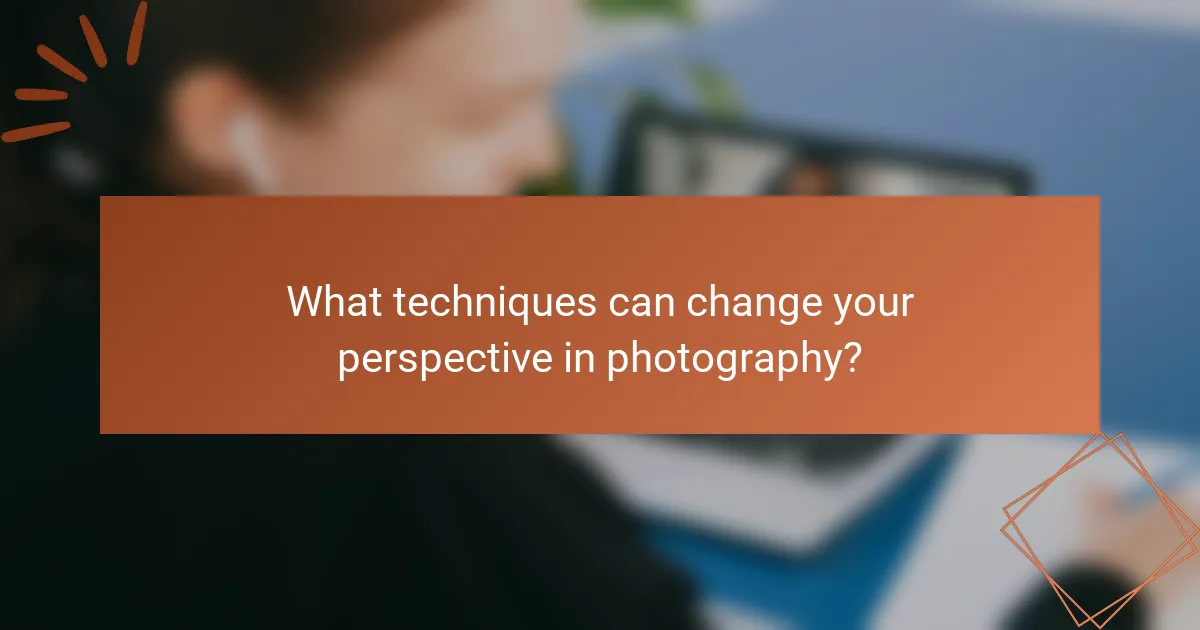
What techniques can change your perspective in photography?
Techniques that can change your perspective in photography include changing your angle, adjusting your focal length, and utilizing depth of field. Changing your angle involves shooting from high or low viewpoints to create a unique perspective. Adjusting your focal length allows for different compositions, making subjects appear closer or farther away. Utilizing depth of field can isolate subjects by blurring the background, emphasizing the main subject. These techniques are commonly used by photographers to create impactful images.
How can camera angles alter perspective in photography?
Camera angles significantly alter perspective in photography by changing the viewer’s perception of depth and scale. A low angle can make subjects appear larger and more imposing. Conversely, a high angle can diminish a subject’s presence, making it seem smaller or less significant.
Different angles can also affect the composition and emotional impact of an image. For example, a tilted angle can create a sense of unease or tension. In contrast, straight-on angles often convey stability and balance.
Research indicates that the choice of camera angle can influence the viewer’s emotional response. A study published in the Journal of Visual Communication found that low angles evoke feelings of power, while high angles elicit feelings of vulnerability.
Thus, camera angles play a crucial role in shaping the narrative and emotional tone of a photograph.
What are the effects of shooting from high or low angles?
Shooting from high angles often makes subjects appear smaller and less significant. This perspective can evoke feelings of vulnerability or powerlessness. Conversely, shooting from low angles can make subjects appear larger and more imposing. This angle often conveys strength or dominance. High-angle shots can provide a broader context of the environment. Low-angle shots can create a sense of drama and intensity. Studies in visual perception indicate that angle impacts viewer emotions and interpretations. For example, high angles can lead to feelings of safety, while low angles may increase tension.
How does changing the distance to the subject impact perspective?
Changing the distance to the subject alters the perspective in photography significantly. As the distance decreases, the subject appears larger and more dominant in the frame. This creates a sense of intimacy and can convey emotion. Conversely, increasing the distance diminishes the subject’s size, making it less prominent. This can evoke feelings of isolation or context within a broader scene. Perspective distortion also occurs when the camera is closer to the subject, affecting proportions. For instance, a wide-angle lens used up close can exaggerate features. In contrast, shooting from a distance with a telephoto lens compresses space and flattens the image. These effects are fundamental in visual storytelling and composition.
What compositional techniques can enhance perspective in photography?
Leading lines create a strong sense of perspective in photography. They guide the viewer’s eye toward a focal point. Examples include roads, rivers, or fences. Utilizing leading lines can add depth to an image.
Framing involves using elements in the scene to create a ‘frame’ around the subject. This technique draws attention and enhances perspective. For instance, archways or tree branches can serve as natural frames.
The rule of thirds divides the image into a grid. Positioning key elements along these lines can enhance visual interest. This technique encourages dynamic compositions that draw the viewer in.
Foreground interest adds layers to an image. Including objects close to the camera creates depth. It makes the background appear farther away, enhancing perspective.
Different angles can drastically change perspective. Shooting from a low angle can make subjects appear larger. Conversely, a high angle can provide a broader view.
Using wide-angle lenses can exaggerate depth. They capture more of the scene while stretching the foreground. This effect enhances the sense of perspective in the photograph.
These compositional techniques are widely recognized in photography. They have been taught in various photography courses and workshops. Each technique contributes to a more engaging and dynamic image.
How does the rule of thirds influence perspective?
The rule of thirds influences perspective by guiding the placement of subjects within a frame. This technique divides an image into nine equal parts using two horizontal and two vertical lines. Placing key elements along these lines or their intersections creates a more balanced composition. This balance draws the viewer’s eye naturally through the image. It also enhances depth by suggesting spatial relationships among elements. Research shows that images following the rule of thirds are perceived as more engaging. Studies in visual perception confirm that this method helps create a sense of harmony and movement. Thus, the rule of thirds significantly affects how perspective is interpreted in photography.
What is the effect of leading lines on perspective perception?
Leading lines significantly enhance perspective perception in photography. They guide the viewer’s eye toward a focal point. This technique creates a sense of depth and dimension. By drawing the viewer into the scene, leading lines can make two-dimensional images appear three-dimensional. Studies show that images utilizing leading lines are often perceived as more dynamic. This is because they create a visual pathway that encourages exploration of the image. The effectiveness of leading lines is widely recognized in composition techniques. They play a crucial role in directing attention and shaping the viewer’s experience.
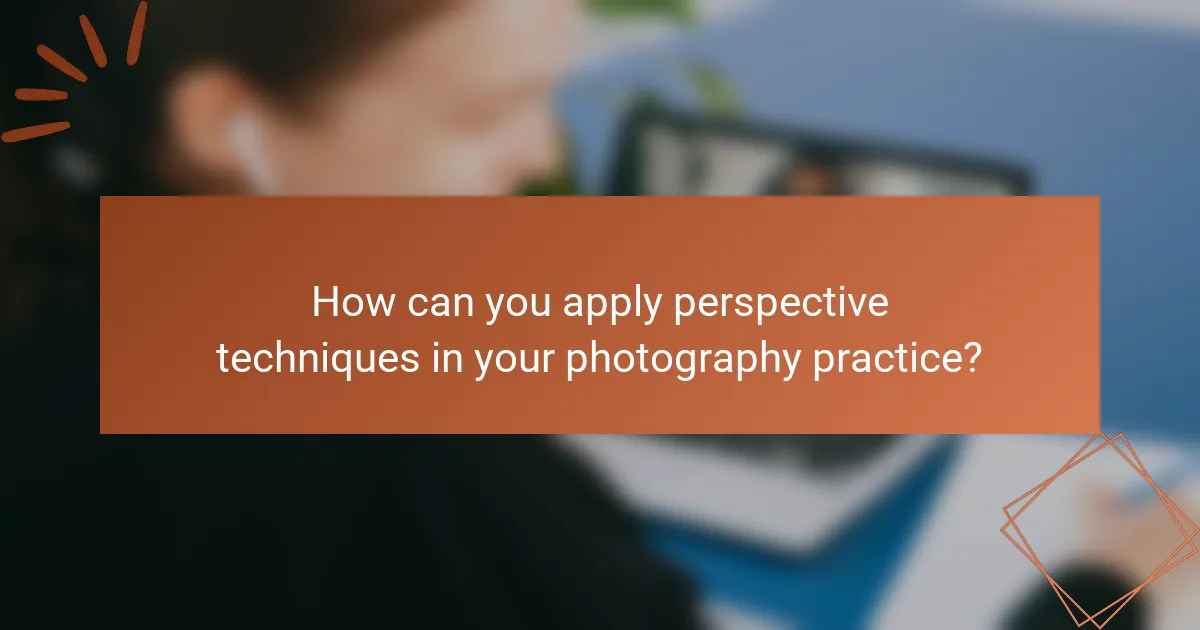
How can you apply perspective techniques in your photography practice?
To apply perspective techniques in your photography practice, you should experiment with different angles and viewpoints. Changing your position can alter the perceived depth and dimensions of your subject. For instance, shooting from a low angle can make a subject appear more imposing. Conversely, a high angle can create a sense of vulnerability.
Additionally, using leading lines can guide the viewer’s eye through the image. Incorporating foreground elements can add depth and context. Adjusting the focal length of your lens can also impact perspective; wide-angle lenses exaggerate depth, while telephoto lenses compress space.
Practicing these techniques can enhance the visual storytelling in your photography. Many photographers utilize these methods to create dynamic and engaging compositions.
What are some practical tips for experimenting with perspective?
To experiment with perspective in photography, try different angles and viewpoints. Change your position by crouching down or standing on an elevated surface. Use leading lines to draw the viewer’s eye into the composition. Incorporate foreground elements to add depth and dimension. Experiment with wide-angle lenses to exaggerate perspective. Capture reflections in water or glass to create interesting layers. Try shooting through objects to frame your subject creatively. Lastly, analyze your results and adjust your techniques based on what works best.
How can you find unique viewpoints in everyday scenes?
To find unique viewpoints in everyday scenes, change your physical perspective. Move to different angles or heights to capture fresh compositions. Experiment with close-ups to highlight details that often go unnoticed. Use leading lines to draw the viewer’s eye in a new direction. Incorporate reflections from surfaces like water or glass for added depth. Adjust your framing to include or exclude elements that alter the scene’s context. Utilize natural light at different times of the day to create varied moods. Explore unconventional subjects or settings to discover hidden beauty. Each technique enhances your ability to see the ordinary in extraordinary ways.
What common mistakes should you avoid when changing perspective?
Common mistakes to avoid when changing perspective in photography include not considering the background. A busy or distracting background can detract from the subject. Another mistake is failing to experiment with different angles. Sticking to eye level limits creative potential. Additionally, neglecting lighting can lead to poor image quality. Proper lighting enhances the subject and the overall composition. Lastly, not planning the shot can result in missed opportunities. Taking time to visualize the final image is crucial for effective perspective changes.
What resources can help you improve your understanding of perspective in photography?
Books on photography often provide in-depth insights into perspective. “Understanding Exposure” by Bryan Peterson is a recommended read. Online courses like those from MasterClass and Udemy offer structured learning on perspective techniques. YouTube channels such as “The Art of Photography” provide visual demonstrations. Photography forums and communities, like DPReview, allow for discussion and feedback on perspective. Workshops conducted by local photography clubs can offer hands-on experience and expert guidance.
Which books or online courses focus on perspective techniques?
Books that focus on perspective techniques in photography include “The Photographer’s Eye” by Michael Freeman and “Understanding Exposure” by Bryan Peterson. Online courses such as “Fundamentals of Photography” on CreativeLive and “Photography Masterclass: A Complete Guide to Photography” on Udemy also cover perspective techniques. These resources provide valuable insights into how perspective affects composition and visual storytelling in photography.
How can photography communities provide feedback on your use of perspective?
Photography communities can provide feedback on your use of perspective through critiques and discussions. Members can analyze your photos and offer insights on how perspective affects composition. They may highlight strengths, such as unique angles or depth, and suggest improvements. Feedback can include technical aspects, like focal length or framing choices. Communities often use platforms like forums or social media for sharing images and comments. Engaging with experienced photographers can enhance your understanding of perspective techniques. Constructive criticism from peers fosters growth and skill development in photography.
The main entity of the article is ‘perspective in photography.’ The article explores how perspective influences the composition, emotional impact, and storytelling in photography. It examines various types of perspective, such as linear and atmospheric, and discusses techniques for altering perspective, including camera angles, focal length adjustments, and the use of leading lines. Additionally, the article highlights the importance of perspective in shaping viewer interpretation and emotional responses, offering practical tips for photographers to enhance their work through effective perspective techniques.
